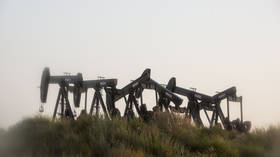The company suspended work on the underwater pipeline on December 21, shortly after US President Donald Trump signed the National Defense Authorization Act for the 2020 fiscal year. The law envisions sanctions against companies involved in the construction of two major Russian gas pipelines, Nord Stream 2 and TurkStream. Firms are given 30 days to quit the projects or face US penalties.
Also on rt.com Russia has ships to complete Nord Stream 2 pipeline without European help
Despite having time before the January 20 deadline, Allseas ordered an immediate stop to the work on Nord Stream 2, the firm said on Monday. Allseas’ Pioneering Spirit pipelayer was anchored in the Norwegian waters around noon on Monday, while another vessel Solitaire was still in the Baltic Sea, but far from the construction area, according to ship tracking website Marine Traffic.
“Allseas constructor fleet has left the Baltic Sea and has been mobilized for preparations for other work,” the company said as cited by Russian media.
Moscow has pledged to finish the construction of the pipeline, which is 93 percent complete. Russian Energy Minister Alexander Novak said that the country has the necessary capacities. One of the options is using Gazprom’s Akademik Cherskiy pipelaying vessel, currently stationed in the Far East. It has all the technical characteristics to finish the pipeline, but replacing the vessels will take time and the launch of the project is set to be delayed until the end of 2020.
For more stories on economy finance visit RT’s business section
Article source: https://www.rt.com/business/477103-allseas-ditches-nord-stream/?utm_source=rss&utm_medium=rss&utm_campaign=RSS

